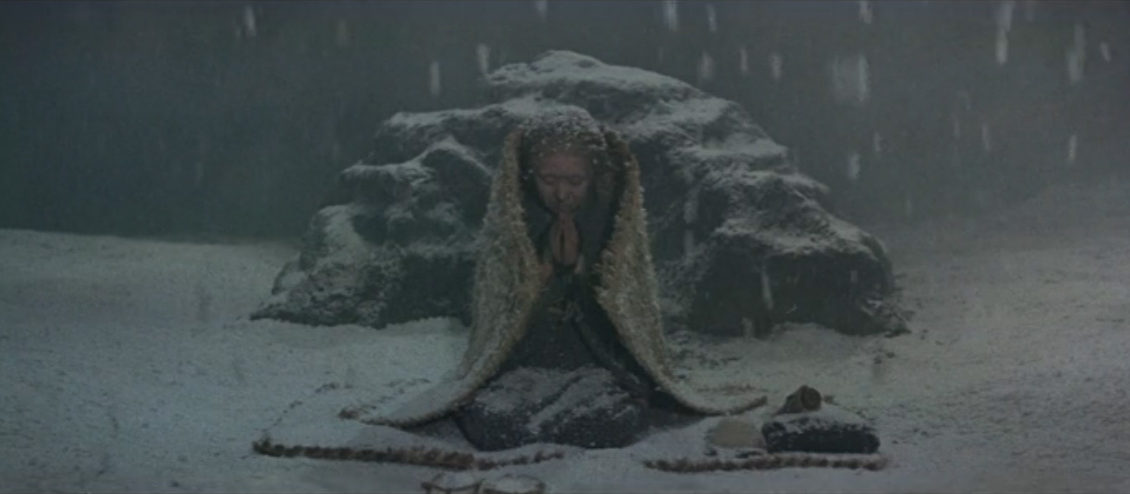
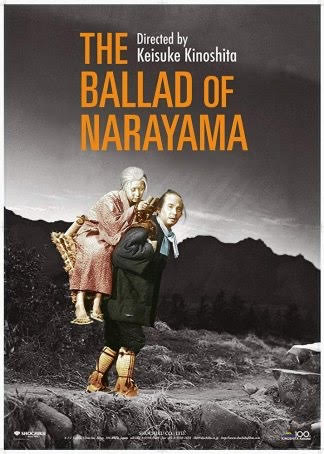
“My granny found herself a set of thirty-three demon teeth.”
Movies are a great way to peer through time and space in order to experience, however cursorily, other cultures and customs. Exploring ancient worldviews and mythologies filtered through the lens of the era in which they were made usually provides a breath of fresh air amidst modern society’s cultural malaise. But occasionally, mixed in with the quaint practices and eccentricities of ages past, we find some that are truly bizarre. Horrifying, even. From a modern Western perspective, things like the blackening of teeth, foot binding, and seppuku can seem heinous and incomprehensible. (I’d add self-castration to the list, but that seems to be coming back in vogue.) To be fair, I’m sure a woman from the past, with bound feet and black teeth, who worships an obscure god, would find it odd that so many modern people spend the bulk of their waking hours interacting with light-up screens and idolizing celebrities.
Anyway, the reason for introducing the idea of curious ancient practices is that Keisuke Kinoshita’s 1958 film, The Ballad of Narayama, concerns the practice of ubasute. Although there is no evidence that it was actually practiced as depicted here—and thus it should properly be considered the stuff of folklore—ubasute involves the abandonment of the elderly in desolation, to die alone. In the case of Narayama, which is based on a 1956 novella by Shichirō Fukazawa, the elderly inhabitants of the small village are toted to the top of a distant mountain by their children in order to meet the local deity and die in peace. This is cast in a positive light—the village elders do this voluntarily, with seeming eagerness, as if it is the proper culmination of their lives. But it also serves a practical purpose, to lessen the burden on the resource-starved village.
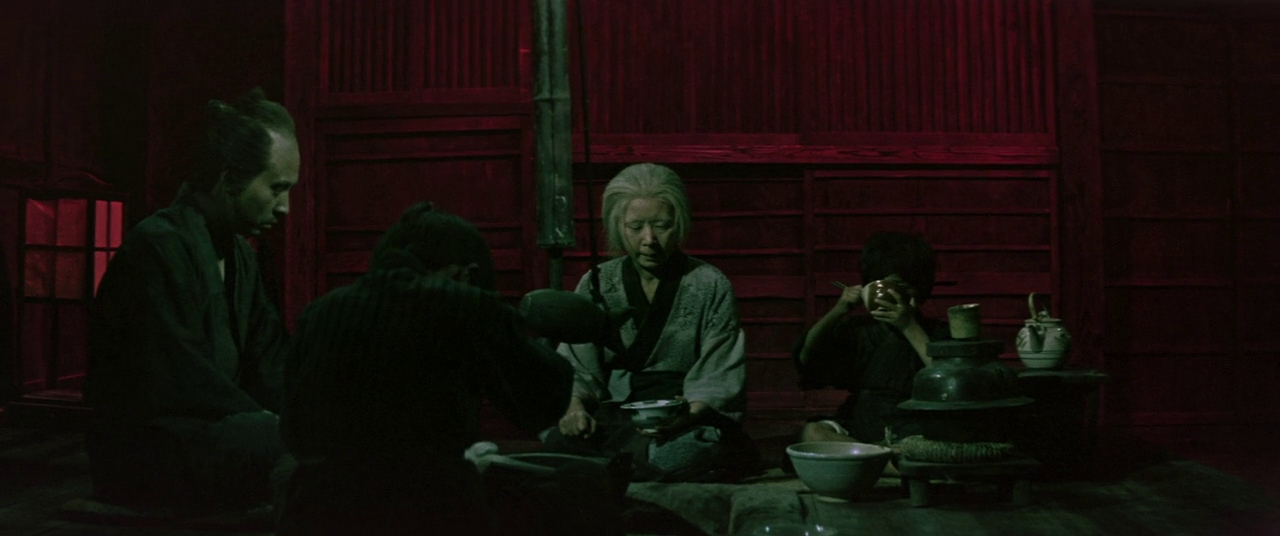
It seems a rather strange idea, at first, but it’s really not that much stranger than abandoning one’s parents in a nursing home when they can no longer care for themselves. Indeed, this idea is really not that foreign to us at all. Consider that last year the governor of New York decided to send patients inflicted with the Covid-19 virus into nursing homes, essentially sacrificing the elderly “for the good of the tribe.” We have more resources in the 21st century, sure, but we’re no less callous than our ancestors when it comes down to it. What makes Narayama peculiar, then, is not the fact of sacrificing the elderly, but the method and proximity. It seems incomprehensible to us that a son would carry his mother to her death, both of them with full knowledge of their imminent farewell. It’s that stark confrontation of the reality of one’s actions that us moderns can’t fathom.
The crucial detail that makes the story of Narayama not just pathetic (in tone, not quality) but truly frightening is that the elders of the village are not abandoned when they can longer sufficiently care for themselves and contribute to village life—but simply when they turn seventy years old. And so when the film’s central character, Orin (Kinuyo Tanaka), crosses the threshold, she believes it is her time to go, even though she is the main caretaker of her household and, to her shame, still has all of her teeth.
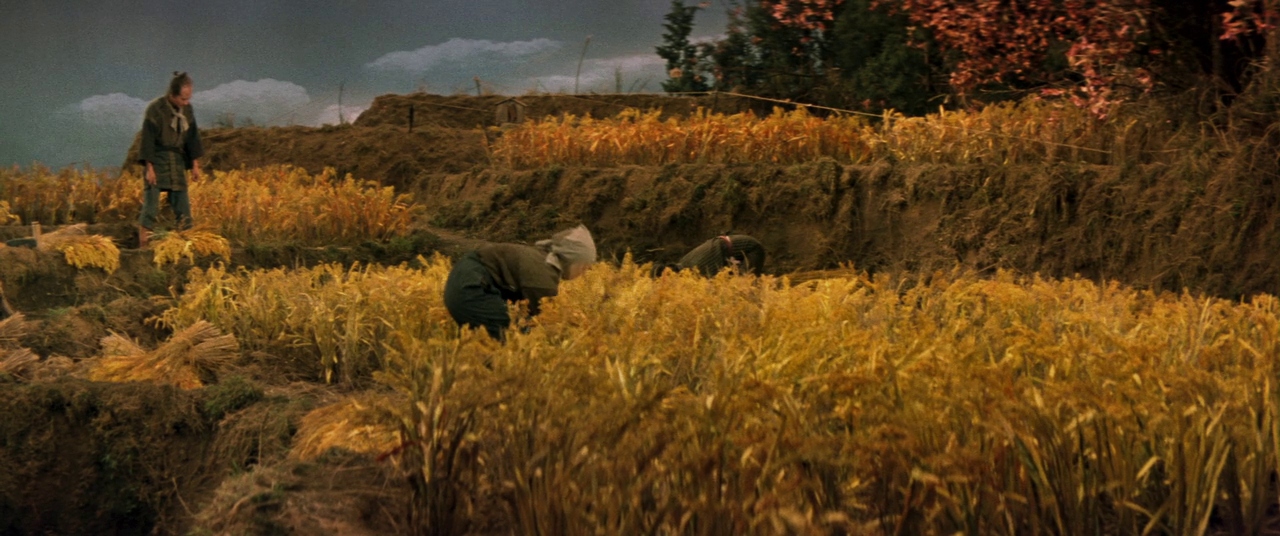
The hangup with the teeth is another oddity that must be taken in stride. For some reason, it is given a lot of prominence. Orin’s grandson teases her about her “demon teeth” and she is seen gnawing on rocks and buckets in hopes of coaxing out a tooth or two. Eventually, during a festival of song and dance, she approaches her son, Tatsuhei (Teiji Takahashi), and proudly flashes a broken-toothed smile as blood drips down her chin.
Let’s move on from the curious plot elements. The presentation of Narayama is similarly difficult to get a handle on. Shot almost exclusively on sound stages and presented as a play, the film has a pervasive sense of artificiality. Utilizing Japanese “Kabuki” style, it makes heavy use of theatrical costumes, exaggerated mannerisms, and moving scenery. Non-diegetic, sung narration is liberally mixed into the story, often accompanied by the plucked notes of a shamisen. The use of vibrant color schemes and dynamic lighting, as well as deliberately flashy scene transitions, further emphasize the unreality of the film. These transitions are generally fantastic, such as when the color palette shifts from realistic to black-and-red when Orin reveals her jagged teeth, or when a painted backdrop is literally dropped to transition the characters from one setting to another. Seeing the expertly crafted landscapes with painted backdrops is jarring, but the artifice is clearly deliberate, and achieves a solid sense of mythical unreality to match the folkloric source material.
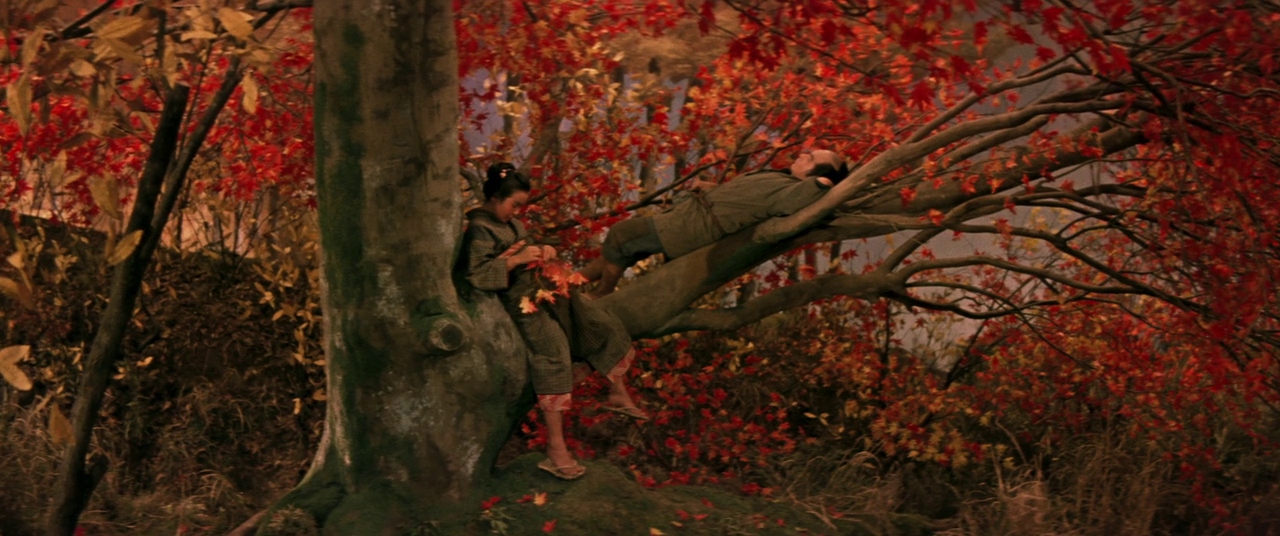
The film ends with a coda even more bizarre than the rest of the film—the only scene not filmed on a stage, it shows modern day people coming to Narayama to go skiing. Only a small placard notifies the skiers of the ancient practice of ubasute. If one can spare some time to sink their teeth past the shocking surface of Narayama, I think there is plenty of potential takeaway concerning family life, self-sacrifice, respect of elders, and the process of bereavement. With a unique visual aesthetic and a narrative that subtly works its way under the skin, The Ballad of Narayama is a delightful experiment that is only partially marred by the uncertain juxtaposition of its basic elements.